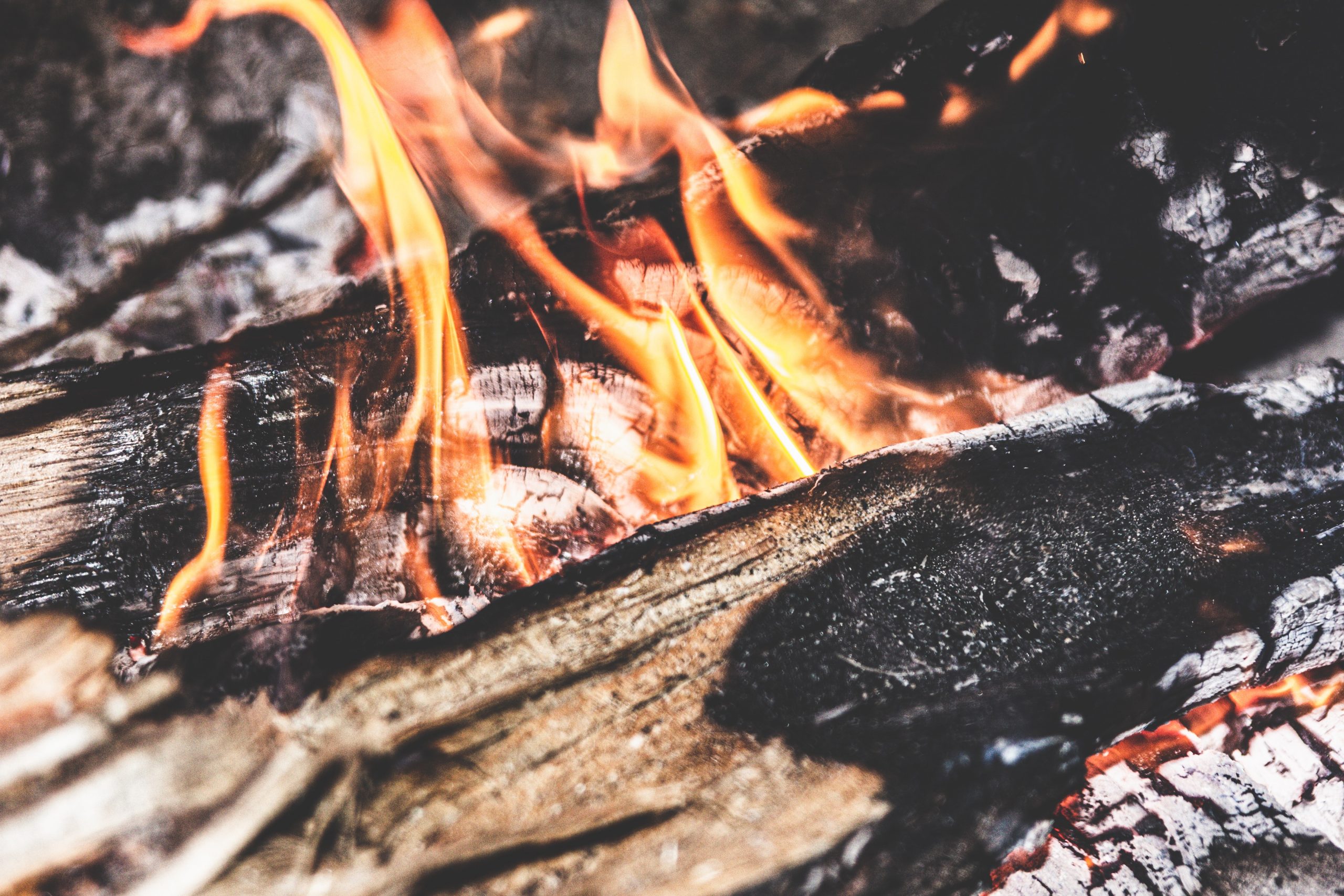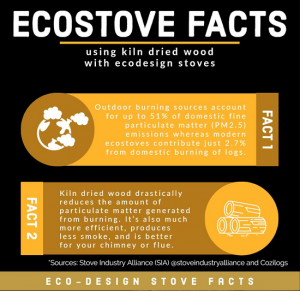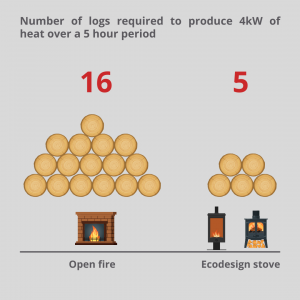
We have all seen the headlines throughout the last year that frequently label owners of wood burners as ‘selfish’ and heavy contributors to pollution. It’s left many of us asking questions like, “Is burning wood bad for the environment” and “Is burning wood bad for your health”.
With the media against burning wood and kiln dried wood companies like ours encouraging it, who’s in the right? Let’s take a balanced look at the facts.
Understanding the different types and states of wood
To start to make sense of the conflicting information online and in the media, it is important to first talk about the basics.
As you likely know, there are many different types of wood — some more efficient than others to burn — with different moisture content levels. However, there are also additional factors to consider when burning wood such as the associated impact on the environment, and this shouldn’t be overlooked.
It is certainly true that burning certain types of wood is bad for your health and the environment, so let’s investigate which types of wood should be avoided when starting a fire.
Types of wood not to burn (ever)
Although this is a nuanced topic, there are still some absolutes. Here are some woods that you should never burn as it can be bad for you, and for others around you:
Wet wood
Used to describe wood with a moisture content above 20%. This should be avoided as it’s very inefficient and can produce a lot more smoke and creosote build up. Moisture can often be present as a result of the environment and isn’t always a result of freshly cut wood.
Green wood
Recently cut wood that has a high moisture content. This moisture content is a result of the natural moisture that is present within the tree. Can again cause excessive smoke and creosote build up.
Scrap wood
Wood frequently contains chemicals that are both bad for you and bad for the environment. This can be parts of old wooden fencing, wood panels etc. This type of wood should be completely avoided, and not considered for any type of fire.
Unfortunately, many people still burn wood that has had other uses prior such as wooden fencing that is coated in chemicals, inefficient wet wood, and green wood to name a few. Burning these types of wood is not only bad for the environment, but also is bad for your health, and should be avoided at all costs.
Safe wood to burn
As we’ve covered the types of wood you should not burn, let’s now focus on wood that is completely safe to burn. This wood generates minimal pollutants, and if bought from providers such as us, the wood comes from sustainable British woodland too.
Low moisture content firewood
It is important to note that the wood described below should be untreated, and have no chemicals present. Firewood moisture content should also be less than 20% which can be checked and verified with a moisture metre.
Seasoned wood
Wood that is dried naturally over time. Despite being perfect for burning, it can take some time before the wood is ready to use.
Kiln dried wood
Wood that is dried in a kiln through a controlled process. It is significantly quicker to reduce moisture content via this method.
All of the wood that we sell at Cozilogs has never been treated or had any chemicals used in the process. This means that our wood is safe to burn for heat, and is perfect for cooking, too!
Is burning wood bad for the environment and your health?
Now that we’ve covered some of the surface-level basics, let’s dive into the data associated with wood burning and measure “Is burning wood bad for the environment”.
Firstly, it is important to understand that the waters have been muddied by the coverage in the media. Headlines and articles often conflate the multiple types of wood used for burning together forming generalised statements and opinions.
Of course, as we’ve just covered, there is a lot of nuances to this subject which oftentimes isn’t effectively represented by the media.
Stove industry alliance thankfully have written a great post about this on their website echoing our thoughts by stating the following:
“It is easy however to find press articles telling us about the “shame” of “wood burner” pollution, but very few media commentators bother to point out the fundamental technical differences between open fires, older closed stoves and modern, Ecodesign compliant closed stoves. They rely instead on the catch-all term “wood burners” and in doing so miss important facts in their reporting.”
Diving into the data without the spin
There is a common misconception that all wood burning stoves have a significant adverse impact on the health of those that use them in their home or place of work.
Dr Amanda Lea-Langton, who is a senior lecturer in Bioenergy Engineering at the University of Manchester, conducted a literature review looking at studies into the contribution of wood burning stoves to indoor particulate matter in the developed world. The findings were conclusive — there is no scientific evidence that indicates adverse health effects brought on by breathing indoor air around modern wood burning stoves.
Findings indicated that
“oil-based cooking had peak value PM concentrations significantly higher than the WHO-recommended average 24 hour exposure limit”.
This should illustrate the need for a more detailed and case-by-case perspective when it comes to wood burning.
For example, an ecodesign ready stove produces
“90% fewer PM emissions than an open fire, and 80% fewer PM emissions compared to a 10 year old stove”.
(Source — Stove Industry Association).
The impact stoves and wood burners have on PM emissions
Burning the correct wood is better for your health, and the environment, and is actually much more efficient than burning wet or junk wood. In addition to choosing the correct wood, there are other measures you can take to ensure you are minimising your impact on health and the environment.
We covered earlier the importance of differentiating the states and types of wood when it comes to the impact they have on health and the environment. The same is true when it comes to the types of stoves and fireplaces that are used.
With this in mind, let’s discuss the differences between the different types of stoves and wood burners.
Old stoves vs new
Not all stoves are created equal! This is important to understand as a stove from 10 years ago may yield very different efficiency performance to that of a modern stove. Also, PM emissions will be drastically different which is why it is important to not generalise when it comes to burning performance and emissions of stoves.
It is important to think of older stoves (10 years old or more) as something completely different to how you think about modern eco stoves.
Schemes and certifications that help reduce PM emissions
Ecodesign stoves and ClearSkies
ClearSkies is a certification scheme for stoves and fireplaces that looks at emissions and energy performance. This scheme is designed to allow people to be more informed when buying their wood burning appliances that meet the minimum performance level for Ecodesign Regulations. You can find out more about ClearSkies on their website.
ClearSkies – look for the clearSkies label when choosing your new stove or fireplace
It is important to understand the differences between the different methods for burning wood. Outdoor burning sources account for up to 51% of domestic fine particulate matter (PM2.5) emissions whereas modern eco stoves contribute just 2.7% from domestic burning of logs.
Kiln dried wood drastically reduces the amount of particulate matter generated from burning. It is also much more efficient, produces less smoke, and is better for your chimney or flue.

Source: Stove Industry Alliance (SIA)
Ready to Burn kiln-dried firewood
The Ready to Burn fuel certification scheme makes it easy for people to find the cleanest fuels for burning at home. Using fuels that are approved as Ready to Burn means it’s easy to comply with regulations that outlaw the sale of wet wood and the most polluting fuels. Firewood sold in volumes under 2m3 needs to be certified as Ready to Burn (by Woodsure) and must have a moisture content of 20% or less.
Kiln dried wood is important because it guarantees a low moisture content which is better for burning and better for the environment.

How many logs are required in an open fire vs an ecodesign stove?
Cozilogs is committed to providing efficient and sustainable fuel sourced from British forests and woodlands. This type of kiln dried wood coupled with an ecodesign stove ensures that you are able to enjoy a cosy and efficient fire without any of the associated negatives that we have been hearing in the media as of late.
More information
For more information, please feel free to browse some of the related articles we’ve created in the past, including:
- Kiln Dried Logs in Nets: The Eco-Friendly Log Burning Solution
- The Benefits of Buying Locally Sourced, Sustainable Kiln Dried Logs
- Wood Fuel Revolution Why Kiln-Dried Firewood Logs Are the Future of Sustainable Heating
- Why Sustainable Wood Matters the Environmental Benefits of Using Kiln-Dried Firewood Logs in Your Home
- What Is the Process for Kiln Drying Wood and How Does It Improve Firewood Quality?
- The Five Woods You Should Never Burn and Five That Are Ideal for Fires
Conclusion
Hopefully, you now have a better understanding of which woods are acceptable for burning, and which are bad for the environment and others around you.
It is important to categorise the different methods for burning wood, and also categorise the different types of wood. All of these factors contribute to a huge spectrum of end results in terms of efficiency, fine particulate matter, and environmental impact.
Generalisations and conflating data only muddy the waters when it comes to educating the public on wood burning.
If you would like to learn more about wood burning, or how to get the best results from your stove or fireplace, please visit the links below:
- Contact us page – https://www.cozilogs.co.uk/contact-us/
- Telephone – (01905) 954 736
- Email – sales@cozilogs.co.uk
